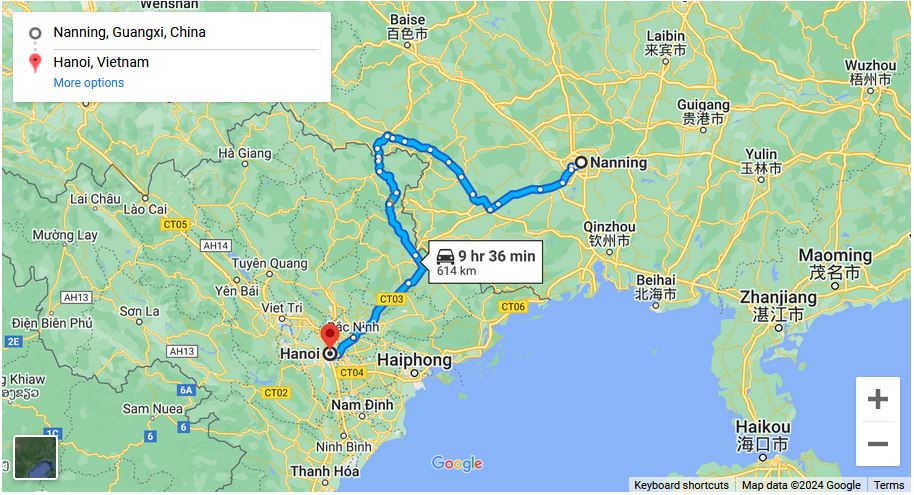The journey from Nanning to Hanoi encompasses a cross-border adventure that takes travelers from the vibrant capital of Guangxi Zhuang Autonomous Region in China to the bustling heart of Vietnam. As one embarks on this route, the landscapes transition from the urban dynamism of Nanning to the historical richness and cultural vibrancy of Hanoi, offering a captivating exploration of the Sino-Vietnamese border region.
Departing from Nanning, the capital city known for its greenery, ethnic diversity, and modern development, travelers have several transportation options to reach Hanoi, the capital of Vietnam. The most common mode of transportation for this journey is a cross-border bus or train, allowing for a seamless transition between the two countries.
The route from Nanning to Hanoi is a testament to the increasing connectivity and cooperation between China and Vietnam. The border crossing at Friendship Pass, also known as Youyiguan Pass, marks the entry into Vietnam. Travelers undergo the necessary immigration and customs procedures, and the journey continues into the Vietnamese landscapes.
The landscapes between Nanning and Hanoi present a mosaic of rural life, paddy fields, and small villages, offering glimpses into the agrarian lifestyles that characterize this border region. The journey unfolds through the Red River Delta, a fertile region that has played a significant role in Vietnamese history and agriculture.
Arriving in Hanoi, travelers are greeted by a city that stands as a testament to Vietnam’s rich cultural and historical heritage. The Old Quarter, with its narrow streets and colonial-era architecture, reflects the city’s ancient roots. Hoan Kiem Lake, surrounded by temples and pagodas, serves as a central gathering point, offering a tranquil escape within the urban bustle.
The Ho Chi Minh Mausoleum, dedicated to the revolutionary leader Ho Chi Minh, is a significant historical site. The nearby One Pillar Pagoda, with its unique architectural design, adds to the cultural richness of the area. These landmarks showcase Hanoi’s commitment to preserving its historical legacy and honoring key figures in Vietnam’s struggle for independence.
Exploring the Old Quarter provides a sensory journey through Hanoi’s traditional markets, street food stalls, and vibrant atmosphere. Each street in the Old Quarter is known for a specific trade, reflecting the city’s historical trading roots. The Dong Xuan Market, one of the largest in Hanoi, is a bustling hub where visitors can experience the energy of local commerce and sample Vietnamese street food.
The Temple of Literature, Vietnam’s first national university, is a cultural gem that showcases the country’s dedication to education and intellectual pursuits. The complex, with its traditional Vietnamese architecture and tranquil courtyards, offers a peaceful retreat within the city.
Hanoi’s culinary scene is a highlight for food enthusiasts. From the iconic pho (Vietnamese noodle soup) to the flavorful banh mi (Vietnamese sandwich), the city’s street food reflects the diverse flavors and culinary traditions of Vietnam. Dining in the streetside cafes, where locals and visitors alike gather, provides an authentic experience of Hanoi’s gastronomic culture.
The Water Puppet Theatre, a traditional Vietnamese art form, offers an entertaining and culturally rich experience. Water puppetry, with its colorful puppets and live music, narrates traditional folktales and legends, providing insight into Vietnam’s cultural narratives.
In conclusion, the journey from Nanning to Hanoi unfolds as a cross-cultural exploration that bridges the landscapes and histories of China and Vietnam. From the green expanses and ethnic diversity of Nanning to the historical charm and cultural vibrancy of Hanoi, travelers witness the dynamic interplay of tradition and modernity. The seamless transition across the Sino-Vietnamese border serves as a reminder of the close ties and shared histories between these neighboring nations. Whether savoring the flavors of Hanoi’s street food or immersing oneself in the historical richness of the Old Quarter, the journey from Nanning to Hanoi is a tapestry of experiences that captures the essence of Southeast Asian charm and hospitality.



